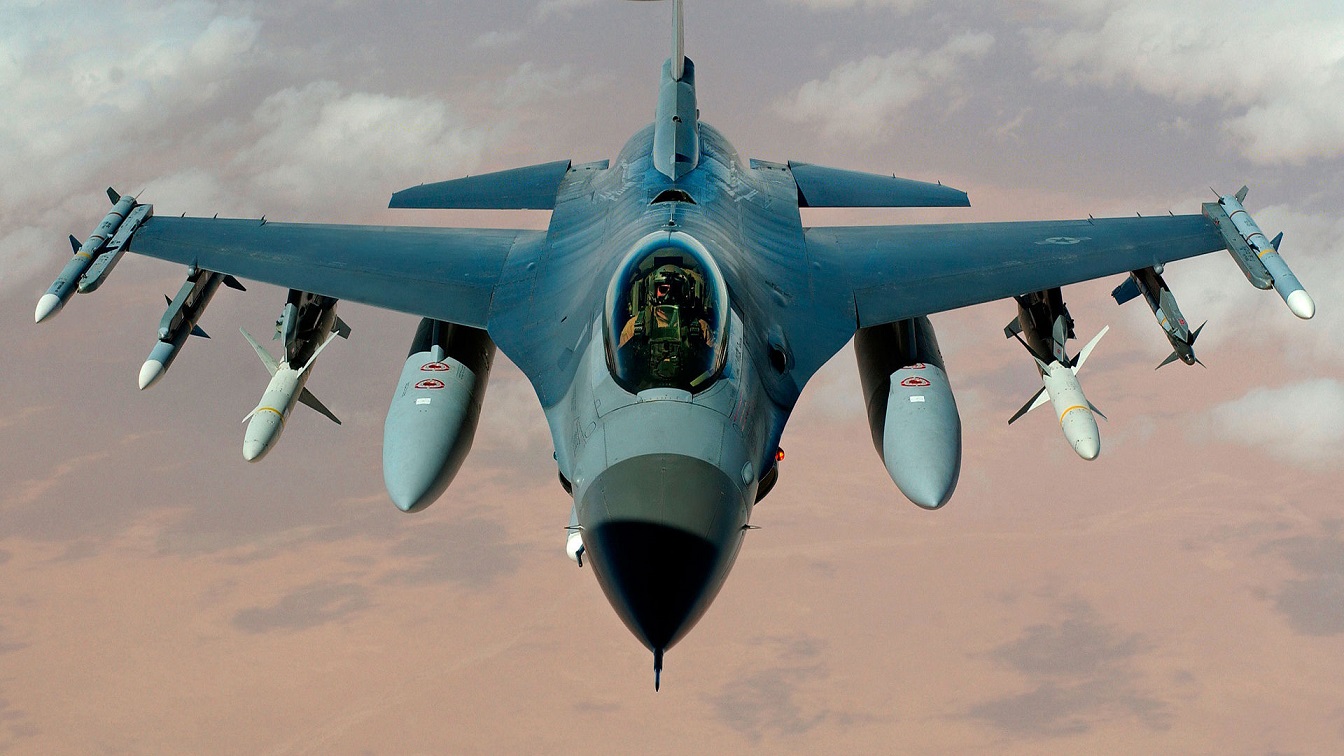F-16 fighters for Ukraine? Don’t bother, says this expert: The Ukrainian MiG-29 pilot known as the “Ghost of Kyiv” became a legend during the first few months of the war in Ukraine.
Video after video showed him popping up from low altitude to destroy Russian jets before diving back into the terrain to make his hasty escape.
The clips did a lot to garner global support for the Ukrainian people, but they were fakes — computer-generated animations that created not just the Ghost legend, but an indelible myth about what well-flown, fourth-generation fighters can do in a high-threat environment like Ukraine.
In reality, there’s been little news about airpower’s effectiveness on either side of the war because it has been sorely absent from the battlefield. The Russian Surface to Air Missile (SAM) systems fielded on both sides are so effective that pilots rarely elect to attack enemy positions because the odds of either success or survival are so low. The threat has driven both sides to executing sporadic pop-up attacks that rarely leave a mark on their enemy.
To help counter the SAM threat in Ukraine, the U.S. has already given the Ukrainians High-Speed Anti-Radiation Missiles (HARMs), but to be effective, they must be launched within the missile’s max range at radars that are on/actively emitting. With no onboard system that can detect a SAM’s emissions or determine its location, hitting a SAM with a HARM launched from a MiG 29 is little more than blind luck.
Some believe that giving the Ukrainians F-16s will change that paradigm, but even our most advanced models are just as ill-suited for a high-threat environment as the fourth-generation MiG-29 and SU-27 fighters the Ukrainians are currently flying.
Originally fielded before either the MiG-29 or SU-27, the F-16 has gone through several block upgrades, although its fourth-generation airframe has remained basically the same for the last 45 years.
In the late 80s, F-16s with more advanced avionics (Block 30s and 40s) received targeting pods, allowing pilots to identify targets and employ short range, precision guided munitions.
In the early 1990s, even more advanced F-16s (Block 50s) received the HARM Targeting System (HTS) pod that allows teams of these fighters, known as “Weasels,” to triangulate active SAM radars, determine their location and attack them with HARMs.
Weasels are very capable, but they must have “line of sight” to the target, which means they can be shot down by the threats they’re trying to destroy.
The Russian’s are employing the S-400 SAM system in Ukraine. Fielded 15 years after the Block 50 F-16, it was designed specifically to outclass the Weasel and is one of the best SAM systems in the world.
In an all-out war, Weasel pilots could suppress those SAM systems, but it would require jets to fly close enough to bait S-400 operators into turning their systems on, allowing the Weasels to go to work.
More than a dozen operational Weasel pilots I interviewed in 2017 said the fighter losses from such a dual would be unsustainable. Each conveyed the belief that the only fighter capable of taking on the S-400 and avoiding those losses is the fifth-generation fighter designed specifically for that fight – the F-35.
On the surface, the idea of giving Ukraine F-16s is noble, but sending even our best fourth-generation fighters to face a fifth-generation SAM threat would be a very costly mistake – one that some well-informed members of Congress even recognize.
During a recent House Armed Services Committee meeting, Rep. Adam Smith said the F-16 is “not the right system” to send to Ukraine because it would “face of a ton of air defense.” He added: “A fourth-generation fighter in this particular fight is going to struggle to survive.”
While Smith is right about not sending F-16s to Ukraine, it’s hard to understand why he doesn’t extend that same logic to U.S. procurements. He has been one of the biggest supporters of buying the fourth-generation F-15EX over the less-expensive, fifth-generation F-35.
The threats our fighters would face in a fight with China far exceed those found in Ukraine. Even in the mythical hands of the Ghost of Kiev, the F-15EX would be a death trap for our pilots.
If the war in Ukraine teaches us just one thing about airpower, it’s that fourth generation platforms have no place on the modern battlefield. The idea of providing Ukraine with F-16s is laudable, but it would be a costly mistake. A better strategy would give the Ukrainians more air-defense systems like the Patriot to deny Russian airpower, while continuing to supply them with the artillery, rockets and tanks required to take the fight to that enemy.
MORE: F-35 – The Best Fighter Jet Ever?
MORE: SR-72 – A Mach 6 Bomber?
MORE: Su-57 – Is Russia’s Stealth Fighter Doomed?
A graduate of the U.S. Air Force Fighter Weapons Instructor Course with more than 3,300 hours in the F-16C and a veteran of three combat operations, John “JV” Venable is a senior research fellow for defense policy at The Heritage Foundation. This first appeared in RealClearDefense.

